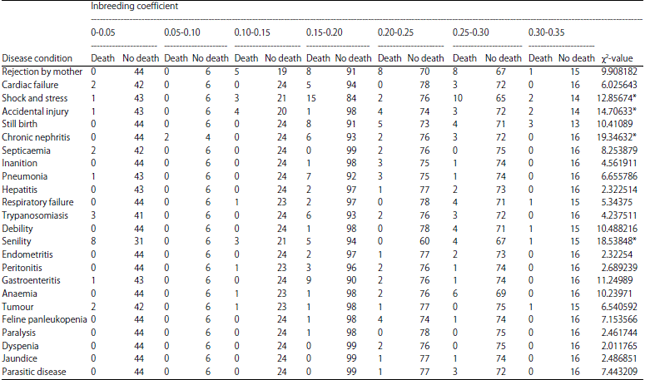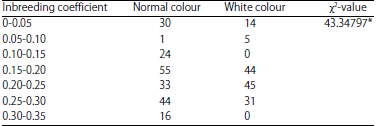Research Article
Effect of Inbreeding on Different Fitness Traits of Captive Tiger Population
Department of Animal Breeding and Genetics, College of Veterinary Science and Animal Husbandry, Orissa University of Agriculture and Technology, Bhubaneswar, Odisha, India
Gangadhar Nayak
Department of Animal Breeding and Genetics, College of Veterinary Science and Animal Husbandry, Orissa University of Agriculture and Technology, Bhubaneswar, Odisha, India
Chinmoy Mishra
Department of Animal Breeding and Genetics, College of Veterinary Science and Animal Husbandry, Orissa University of Agriculture and Technology, Bhubaneswar, Odisha, India












